Share
Or
https://www.archdaily.com/1034907/beyond-private-dining-exploring-the-communal-table-as-public-space-infrastructure
The habit of sitting at the table and sharing a specific moment with other people has been present for centuries in the most diverse cultures. The Greek Symposium, Roman Convivium, Medieval Feasts and Banquets, and Parisian Salons are just a few examples of how this custom was historically built and has been relevant in social and political negotiations, intellectual discussions, and philosophical debates.
Commensality often serves as a ritual for bonding, negotiation, and celebrating important events. In many Spanish-speaking cultures, the stretch of time after the meal when the entire family stays seated and talks is so present that there is a word for it: sobremesa — literally translated as “upon the table” (though in Spanish it more accurately means “dessert” or “after-meal conversation”). But, despite often being associated with sharing a meal, the table can be considered a flexible platform open to many possibilities for appropriation and interaction.
Whether it’s for putting together a family puzzle, for sharing a workspace with others, or for meetings, debates, and conversations, tables are capable of gathering groups and stimulating face-to-face interactions, strengthening bonds and meaningful exchanges. These are some of the reasons why communal tables, which aim to be a kind of invitation for a large group of people to gather, have been explored in temporary or permanent installations in public spaces around the world.
Related Article Sharing the Table: 9 Projects Showcasing Innovative Communal Table Designs
Today, five years after the start of a global pandemic where social distance was imposed, especially in contexts of sharing meals, the presence of collective tables is observed in many bar, café, and restaurant designs. These tables make it possible to work, share a coffee, or have a meal alongside people who are often strangers, thereby encouraging relationships between them. To occupy public spaces is to bring the habit of sitting at the table together beyond the private setting — be it domestic or commercial, like bars and restaurants — it is to open up more possibilities for connection between people and to explore exchanges, discussions, relationships, and affections.
In this article, we present a few temporary or permanent installations that reinforce the table’s role as a flexible platform for diverse uses, while simultaneously encouraging the habit of sitting collectively at the table to share a moment.
The Installation Border-Crossing was part of the 5th Edition of the Biennale Svizzera del Territorio, with the theme “Back to the Future”. Among proposals that explored how architects can shape concrete alternatives to today’s rapidly changing world, this installation stands out for its mediating nature. A 2m by 8m table is placed on the top of an existing wall, an element of division. Thus, what was once only a border is transformed into a meeting area:
The table, an elemental object of domestic life and human sociability, with such dimensions, operates as a flexible platform open to various uses: discussions, workshops, lectures, and more.
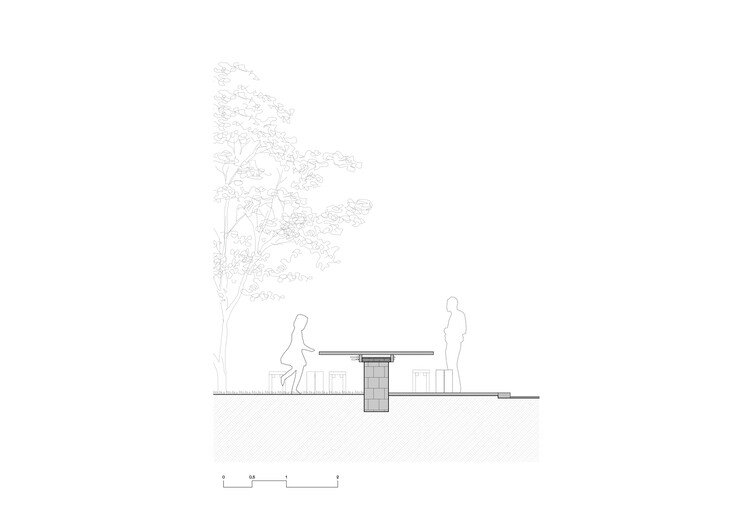 Installation Border-Crossing / AGENCIA TPBA + Clube + Pianca Arquitetura
Installation Border-Crossing / AGENCIA TPBA + Clube + Pianca Arquitetura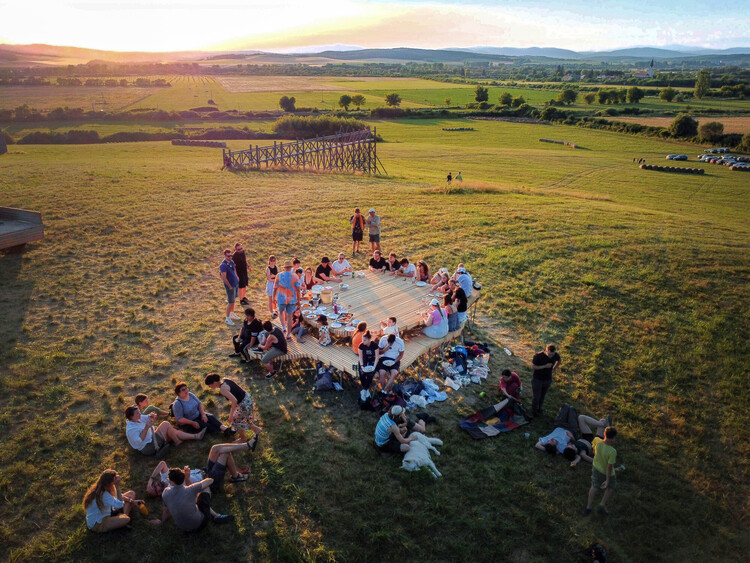 © Ungerhofer Dániel, Fátrai Júlia, Reizinger Ákos, Laczkó Péter
© Ungerhofer Dániel, Fátrai Júlia, Reizinger Ákos, Laczkó Péter
100x Round Table is located in Ipolytarnóc, in an open field known as the Field of Sparks — a site where architecture and artistic experimentation take shape. The design was conceived to accommodate large groups around a table that adapts to the natural topography. Steel pipes anchored to the ground provide structural stability, actively minimizing disturbance to the site. The seating and tabletop feature offset wooden slats for variation in texture and color.
The result is a structure that is both functional and adaptable, serving as a focal point for social interaction while integrating seamlessly into its surroundings.
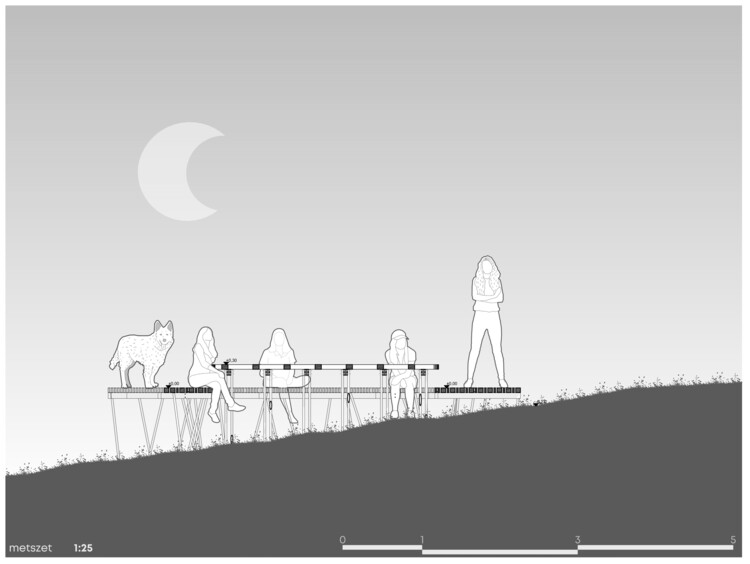 100x Round Table / Atelier Széchenyi István University for Field of Sparks
100x Round Table / Atelier Széchenyi István University for Field of Sparks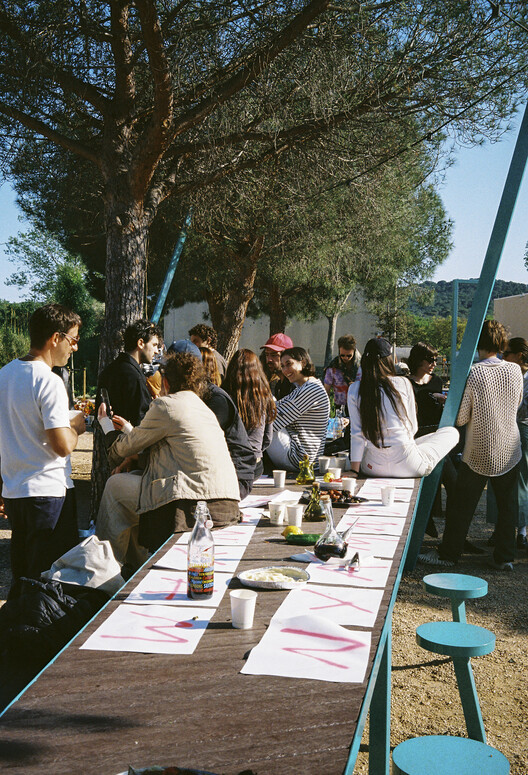 © Lluis Tudela
© Lluis Tudela
The Communal Barbecue (La Barbacoa Comunal) is an urban and landscape renewal project in the industrial area of Castell d’Aro on the Costa Brava. Inspired by the idea of collective meals as a social and revitalizing element for public spaces, the design features three key elements: a sculptural barbecue, a large zigzagging table seating up to 50 people, and the re-naturalization of the surrounding environment. This design actively encourages socialization and communal dining in a natural setting, offering flexibility and accessibility through empty spaces that adapt to various needs.
Collective meals have always been a central pillar of community identity and social cohesion in our Mediterranean culture. Street dinners during local festivals, calçotades with friends in February, Sunday barbecues, or blowing out birthday candles with classmates in a park — these are all moments that foster community through food.
 The Communal Barbecue / h3o architects
The Communal Barbecue / h3o architects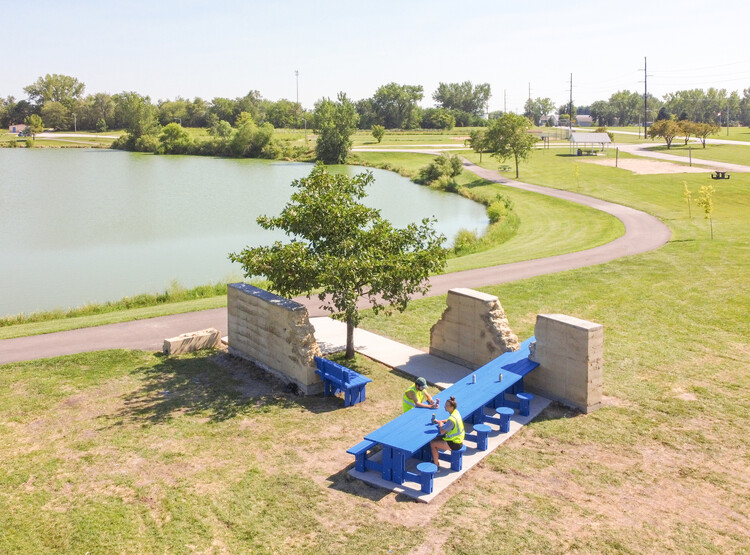 © Neal Lucas Hitch
© Neal Lucas Hitch
The Dining Room is an experimental earthen pavilion and public dining space at Lake Petocka in Bondurant, Iowa. As the heart of a planned series of installations, its construction began with two unreinforced rammed earth walls built from local sand, clay, and gravel. Uniquely, the design incorporates strategic erosion breaks to ensure the walls evolve over time, making nature and time itself co-creators in the structure’s ongoing transformation.
Building off the hometown feel of the city, each installation plays upon communal spaces typically found in a house and scales it to the size of the community park.
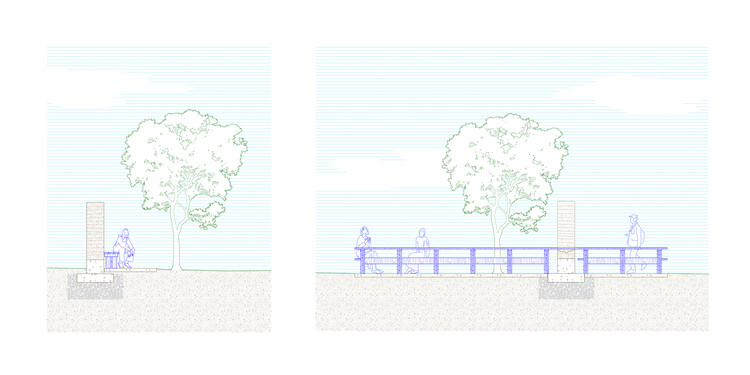 The Dining Room Installation / i/theeTo the table!/ Ander López + Sarai Olabarrieta
The Dining Room Installation / i/theeTo the table!/ Ander López + Sarai Olabarrieta 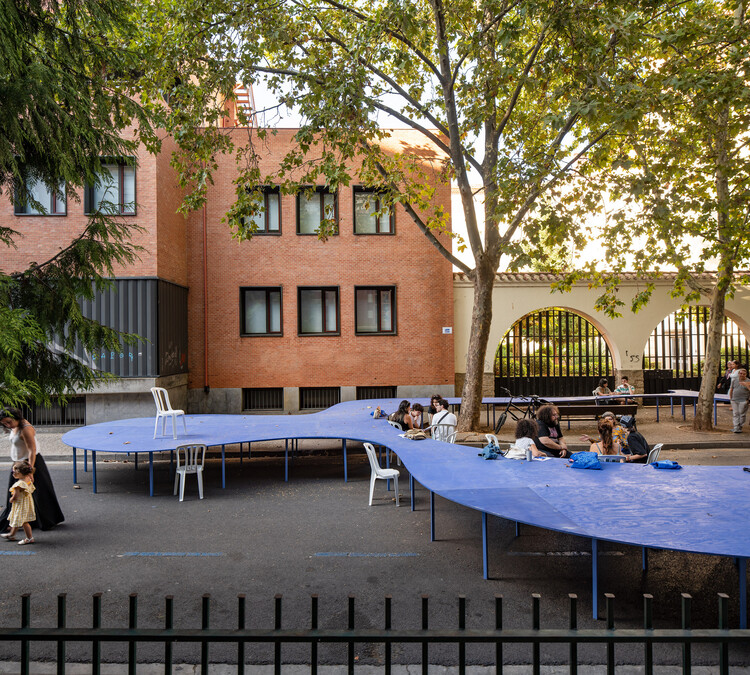 © Josema Cutillas
© Josema Cutillas
As part of Concéntrico 2022, “To the table!” saw an opportunity in the idea of gathering around the table. Its fluid shape created nooks and alcoves, as a living organism that the neighbours would conquer. Its program included activities like popular meals, workshops, meetings, and talks.
It aims to accommodate all kinds of picturesque situations. Situated between various urban fabrics of the city of Logroño, it aims to be a meeting point for its communities.
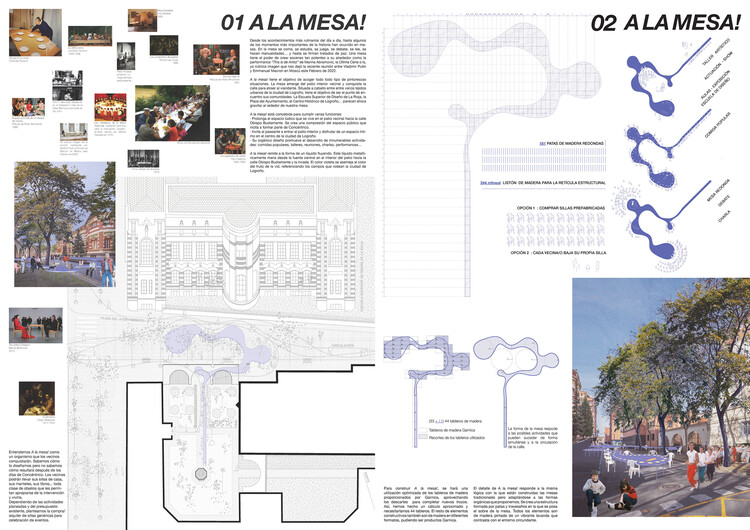 To the table!/ Ander López + Sarai OlabarrietaA Table / AAA
To the table!/ Ander López + Sarai OlabarrietaA Table / AAA 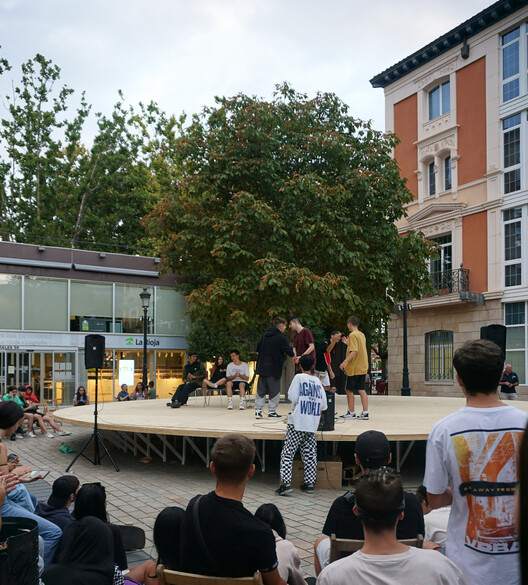 © Josema Cutillas
© Josema Cutillas
Another communal table presented in Concéntrico 2022 was “A Table”, designed with a wide round shape which allowed people not only to sit at the table together, but also to use it as a stage for impromptu rap concerts and informal events. The circular nature of the shape expresses the absence of hierarchies, achieved through limits formed by an infinite series of points equidistant from its center.
The idea of the pavilion attempts to rescue the essence of this long journey by highlighting the value of the collective gathering in a collective space. Sitting at the table and celebrating.
“À Table” is a French expression that means “Time to eat” or “Come to the table.” Inside the pavilion, which is built with a slender wooden structure, a ring of tables and benches invites visitors to enter, sit down, and relax, eat, or work together. According to the architect, the design began with the concept of gathering around a table to contemplate our relationship to the Earth, but also our relationship to each other. The idea of sheltering this space came afterward, intended to protect the people inside it while remaining open to its environment.
À table is an invitation to dwell together in the same space and around the same table. It is an encouragement to enter into a dialogue, to convene and to think about how we could reinstate and re-establish our relationship to nature and the Earth.
This article is part of the ArchDaily Topics: The Architecture of Culture Today. Every month we explore a topic in-depth through articles, interviews, news, and architecture projects. We invite you to learn more about our ArchDaily Topics. And, as always, at ArchDaily we welcome the contributions of our readers; if you want to submit an article or project, contact us.

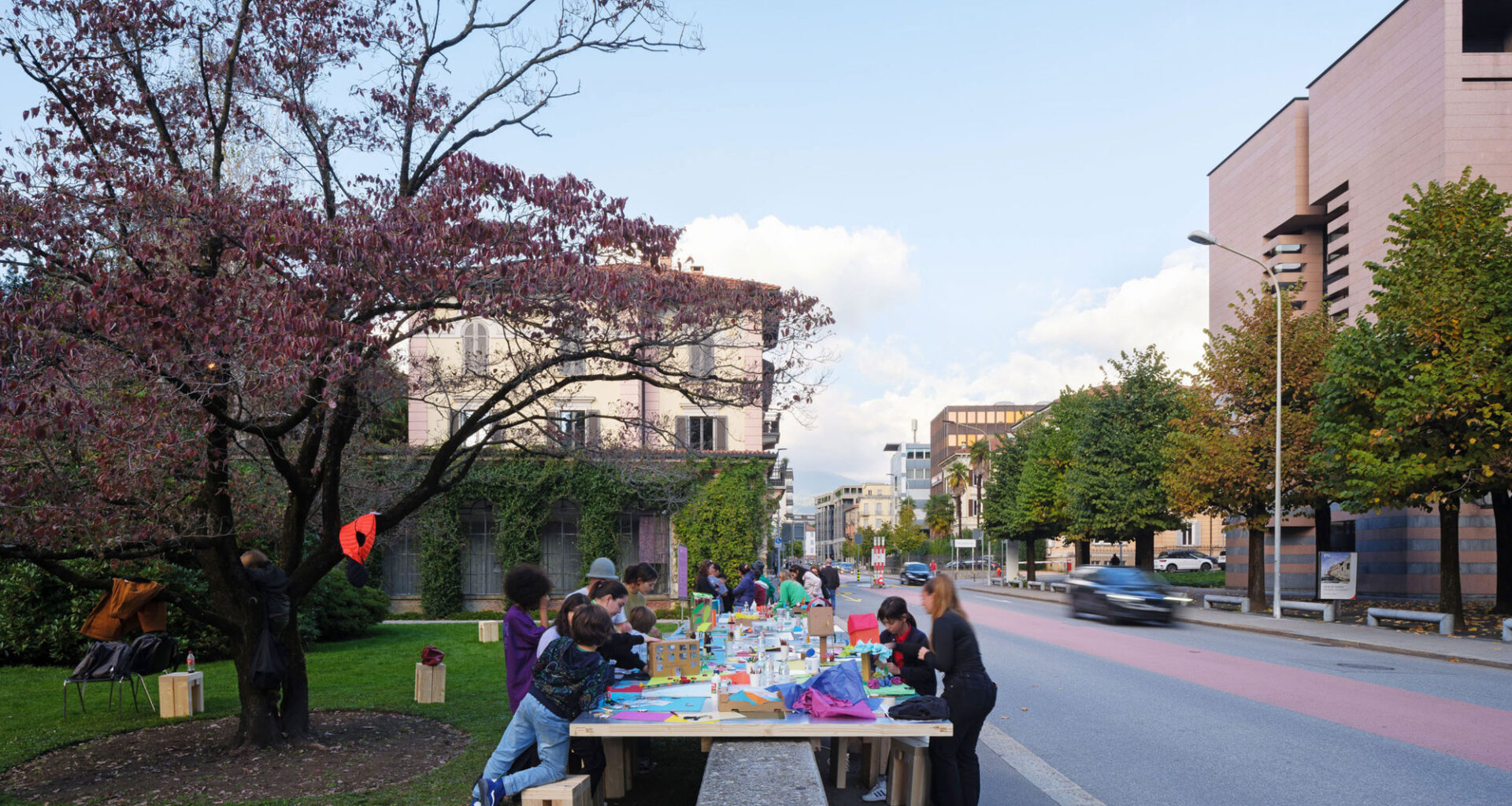
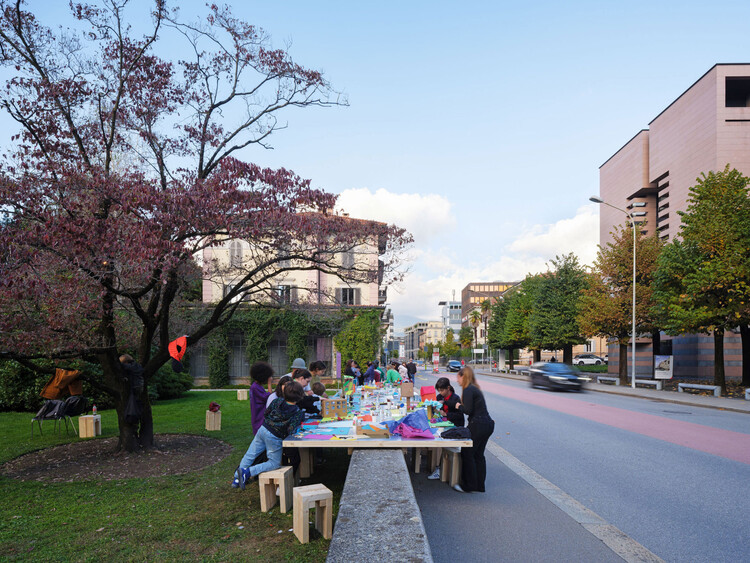
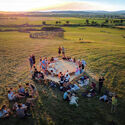
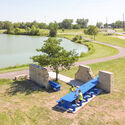
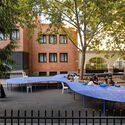
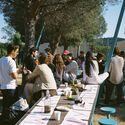
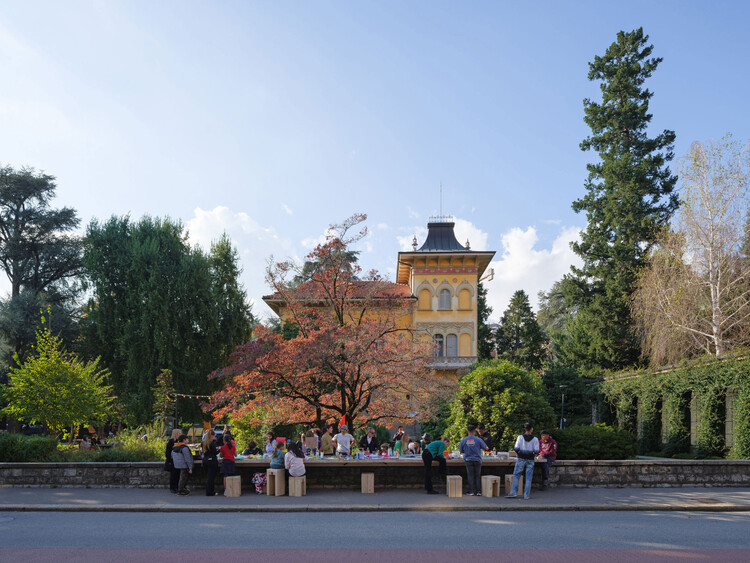 © Javier Agustin Rojas
© Javier Agustin Rojas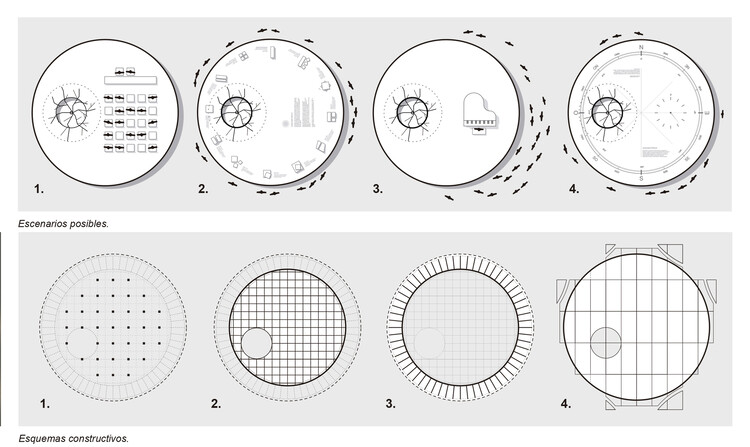 A Table / AAA
A Table / AAA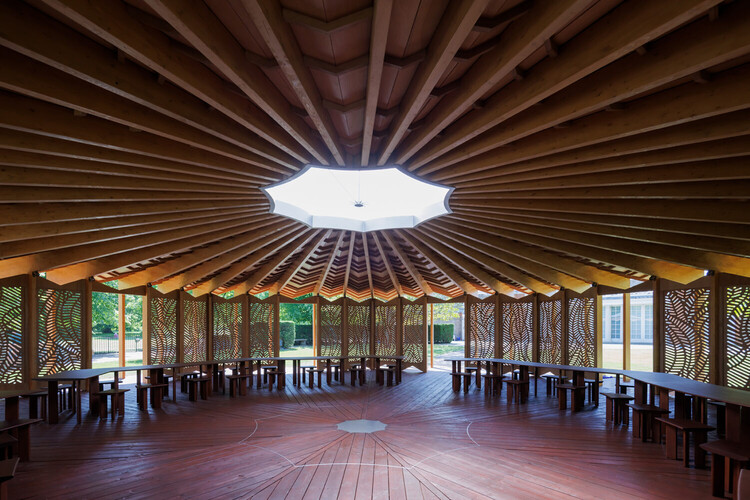 © Iwan Baan
© Iwan Baan